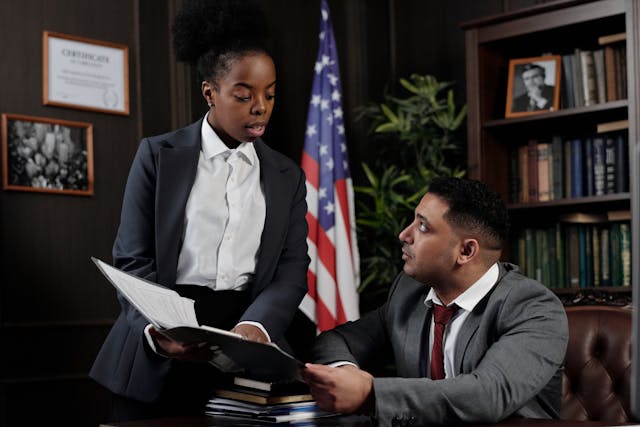Personal Injury Lawsuit? Know What to Expect

Photo from Pexels
Pursuing a personal injury case can be a daunting task, particularly following the occurrence of an accident. Whether a car accident, slip and fall, or occupational injury, it is essential to know what to anticipate in the course of the legal process to make informed choices. A personal injury lawsuit usually has several steps, ranging from collecting evidence to negotiating settlements. While no two cases are the same, there are standard stages in nearly every personal injury claim that you should be aware of. Here’s a closer look at what you can expect when pursuing a personal injury lawsuit.
1. First Consultation with a Lawyer
The first step in any personal injury lawsuit is sitting down with a lawyer. This is a worthwhile opportunity to assess the merits of your case and find out about your legal rights. A quality lawyer will listen to your story, review the facts, and inform you of what to do next. Most personal injury lawyers offer free consultations, allowing you to find out without the hassle of paying first. If you do choose to proceed, they will guide you on what to do in light of the circumstances of your case. For example, a Bakersfield personal injury lawyer will review the individual circumstances of your case, whether you were involved in a car accident or a slip-and-fall and provide tailored advice applicable to your situation.
2. Investigation and Amassing Proof
When you have hired an attorney, they will begin the investigative process. This stage involves gathering all the necessary evidence to support your claim. Your lawyer will collect documents such as medical records, accident reports, witness statements, and any other relevant evidence that can demonstrate the extent of your injuries and the responsible party’s liability. The goal is to build a strong case that clearly shows the other party’s negligence. This can also involve the employment of expert witnesses who will testify for you, supporting the case further. Evidence gathering is a key process in ensuring that you possess all that is required to achieve a favorable verdict in your case.
3. Negotiating a Settlement
After the investigation has been completed, most personal injury cases proceed to the negotiation phase. Now, your attorney will attempt to negotiate a fair settlement with the insurance company or the legal team of the responsible party. Often, the plan is to settle the case without going to trial, as settlements save both parties time and money. However, remember that insurance companies will sometimes attempt to make lowball offers in hopes of not having to pay a fair amount. This is where it is worth having a seasoned attorney. A quality personal injury lawyer will negotiate on your behalf, ensuring that you are not taken advantage of and getting compensation that accurately reflects your medical expenses, lost wages, and pain and suffering.
4. Filing a Lawsuit and Litigation
If settlement is not an option, the next step is filing a lawsuit. This involves submitting a complaint to the court and initiating formally the court procedure. Should the defendant receive service of the suit, then the defendant has time to respond. The procedure may involve various phases, for instance, discovery whereby the two parties exchange information, depositions, and also potentially pre-trial motions. This stage’s main purpose is to determine the strength of each side’s case. Most personal injury claims are resolved through settlement while litigation is pending. Still, in the unlikely event the case is tried, your lawyer will be prepared to present evidence, cross-examine witnesses, and plead your case before a judge or jury.
5. Trial and Verdict
In the event a case is tried, the final stage of the personal injury lawsuit process is the trial itself. This is where each side gets heard by a judge and jury in terms of the evidence and argument. The length of time can range from days to weeks or even longer for more complex cases. The evidence and argument are heard, and the jury (judge, in the case of a bench trial) shall deliver a verdict. If you win the verdict, you are entitled to recover damages for your injuries, doctor bills, lost wages, and pain and suffering. Even following a verdict, however, both parties have the right to appeal the verdict, which can keep the legal process going even longer.
Conclusion
A personal injury lawsuit is often a lengthy and complicated procedure, but being able to understand what to expect can make the not knowing more manageable. From your initial consultation with a lawyer to perhaps even going to court, there are a few important steps to follow. Having an experienced lawyer on your side, like a personal injury lawyer, can make a difference in the outcome of your case. With quality legal representation, you can receive the compensation that you are entitled to for your injuries and rest easy. Remember that all cases are unique, but with good support and perseverance, the desired outcome is possible.
